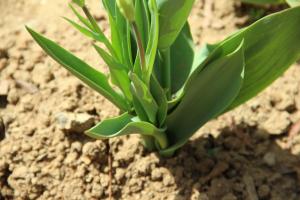What Soil Temperature is Too Hot for Planting Tomatoes
Tomatoes are one of the most popular crops grown in gardens worldwide, and they require specific conditions to thrive. Soil temperature is a crucial factor that influences the success or failure of a tomato plant. Knowing what soil temperature is too hot can help you avoid planting at the wrong time, which can lead to plant stress, disease, and low yields.
The Optimal Soil Temperature for Tomatoes
Before we discuss what soil temperature is too hot, let's first review the optimal soil temperature for tomato plants. Tomato seeds germinate best at temperatures between 68 and 86°F (20-30°C). Once established, tomato plants prefer soil temperatures in the range of 65-75°F (18-24°C).
If the soil temperature is too low, seeds are more likely to rot before they germinate. If the temperature is too high, seeds may not sprout at all, or if they do, the seedlings may become weak and spindly.
What Soil Temperature is Too Hot for Planting Tomatoes?
Tomatoes are warm-season crops, and they thrive in warm soil. However, if the soil temperature gets too hot, it can cause problems for the plants. The ideal maximum soil temperature for tomato growth is around 95°F (35°C). Temperatures above this range can cause heat stress, affecting the plant's ability to take up nutrients, water, and photosynthesize.
If the soil temperature reaches 100°F (38°C) or higher, it can lead to root damage, and the plant may wilt and die. High soil temperatures can also favor soil-borne diseases, such as Fusarium and Verticillium wilt, which can decimate a tomato crop.
Factors That Influence Soil Temperature
Several factors can affect the soil temperature, such as:
Sun exposure - The amount of direct sunlight a garden gets affects the soil temperature. Gardens that receive full sun will generally have warmer soil than those that receive partial or no sun.
Soil moisture - Wet soil tends to cool down more slowly than dry soil. It's essential to maintain soil moisture levels for optimal tomato growth and prevent soil temperature from getting too high.
Type of soil - Different soil types retain heat differently. A light-colored, sandy soil will heat up faster and to a higher temperature than a dark, loamy soil.
How to Manage Soil Temperature for Tomatoes
To ensure the soil temperature is within the optimal range, there are some steps you can take:
Plant at the right time - Timing is crucial when planting tomatoes. Wait until the soil has warmed up to around 60°F (16°C) before planting seeds or seedlings. This usually occurs in late spring.
Provide shade - If the soil temperature is too hot, provide shade to reduce the heat. You can use shade cloth, row covers, or plant taller crops nearby to create a shade canopy for the tomatoes.
Mulch - Mulching can help regulate soil temperature by reducing evaporation and retaining moisture. It can also insulate the soil and protect the plant roots from excessive heat.
Water regularly - Consistent watering is essential for maintaining soil temperature and keeping tomato plants healthy. Water deeply and avoid letting the soil dry out, which can cause stress to the plants.
Conclusion
In summary, soil temperature is a vital factor to consider when planting tomatoes. While they prefer warm soil, temperatures that are too high can lead to plant stress and disease. Knowing what soil temperature is too hot and taking steps to manage it can help you grow healthy and productive tomato plants.

 how many times do yo...
how many times do yo... how many planted tre...
how many planted tre... how many pine trees ...
how many pine trees ... how many pecan trees...
how many pecan trees... how many plants comp...
how many plants comp... how many plants can ...
how many plants can ... how many plants and ...
how many plants and ... how many pepper plan...
how many pepper plan...































